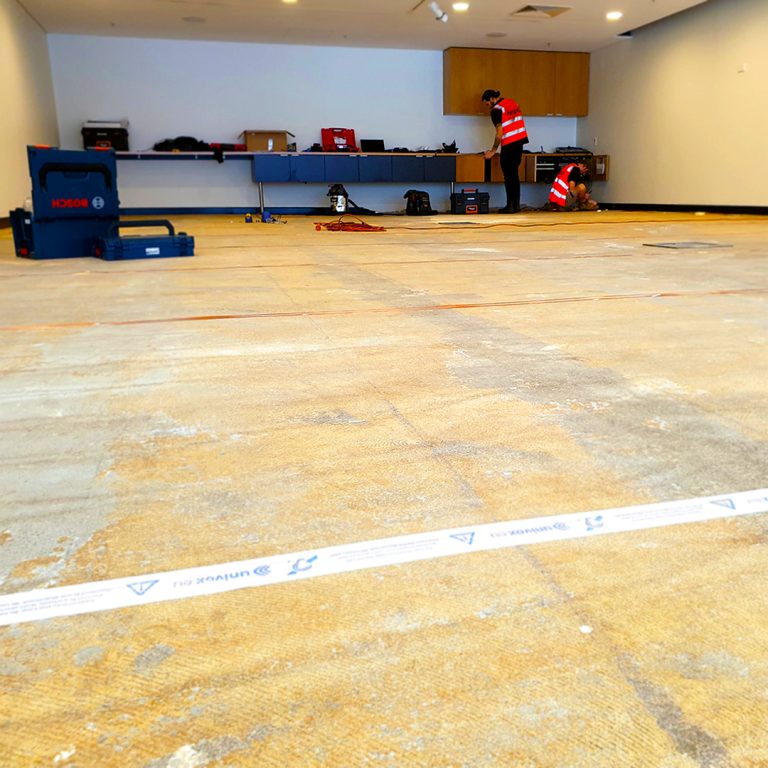What is ALS (Assistive Listening Systems)
And which Assistive Listening System is right for your venue?

Hearing loss can be isolating and oftentimes difficult to navigate–but it doesn’t have to be.
ALS, or assistive listening systems, attempts to cut through the noise in order to deliver a better listening experience for the listener.
Through amplifying the signal-to-noise ratio, audio can be delivered more clearly to help listeners overcome hearing obstacles such as distance from the sound’s source, background noise, and poor room acoustics, as well as limiting interference from other sources.
These systems are predominantly designed to help those with hearing loss to understand speech, as well to as enjoy music and other significant sounds during films, performances and presentations.
The different types of Assistive Listening Systems
ALS are generally divided into two categories – wireless and hardwired. These can be used across a number of areas like cinemas, lecture theatres and concert halls to smaller venues like meeting rooms, ticket offices and banks.

1. Radio Frequency
RF systems function similar to a radio station via a radio transmitter-receiver combination. The signal is broadcast to the listener who picks it up through a special radio receiver tuned to the same transmitting frequency. Some devices are pre-set to fixed channels while others use tunable receivers, typically for use in spaces where transmitters are broadcasting on several disparate channels.
This system works well for small meeting rooms and theatres to much larger areas like entertainment centres, sporting grounds, stadiums and houses of worship.
People with telecoil-enabled hearing aids or cochlear implants can use neck loop RF receivers, which transmits sound directly to their hearing aid. Alternatively, RF receivers can also be used with headphones for people who don’t wear hearing aids.
Pros
- Affordable for covering large areas
- Good sound quality
- Low-cost installation
- Does not require line of sight
- Multiple channels
Cons
- Signal can carry beyond the intended area
- Receiver management (including batteries and headphones)
- Frequencies aren’t allowed in some countries

2. Wi-Fi Streaming
An emerging form of ALS, Wi-Fi streaming allows audio from any sound source to be streamed directly to smartphones. Users can then stream that sound from their phone to Bluetooth-connected hearing aids without the need of additional equipment.
Pros
- Existing Wi-Fi infrastructure can usually be configured to support audio broadcast
- People use their own smartphones without the need to pick up and return receivers
Cons
- Can be expensive if no existing Wi-Fi infrastructure is in place
- Venues need an alternative receiver option for those without a compatible smart device

3. Hearing Loop
Hearing Loop, also known as induction loop, uses a cable in the form of a loop, which his connected to sound source, in order to produce an electromagnetic field to broadcast a signal to anyone with a loop receiver, cochlear implant or telecoil-equipped hearing aid.
Hearing loops are generally preferred over Radio Frequency and Infrared ALS solutions as they don’t need any additional equipment, which results in a simplified and discreet listening experience.
Locations with hearing loops installed will indicate it with the appropriate assistive listening signage.
Pros
- Discreet (Users rely on their own hearing devices without the need to obtain one from venues)
- Sound processed through personal hearing device
- Any number of hearing aids or receivers can be used
- Can be portable or permanently installed in a room or part of a room
Cons
- Expensive installation costs
- Requires professional and experienced technicians for installation to ensure great sound quality
- Can be subject to interference from other ambient electro-magnetic currents from fluorescent lights or high-voltage lines
4. Infrared or IR
This system uses infrared light waves to wirelessly transmit sound to a receiver in a similar way to a TV remote. These systems are predominantly used in areas where spillover sound can be an issue, such as court rooms, cinemas, small meeting rooms and auditoriums.
Much like the radio frequency systems, people with telecoil-enabled hearing aids or cochlear implants can request neck loops in order to stream audio in a venue directly to their hearing aid. Alternatively, those without hearing aids, can obtain a receiver to be used with headphones.
Pros
- An affordable option for covering small and large seating areas
- Transmission is securely confined to the listening area
- Unaffected by, and cannot cause, radio interference
- Generally allows unrestricted seating
- Good sound quality with the option for stereo sound
- Up to 4 channels can be used for different languages and/or audio description
Cons
- Transmitter placement is vital
- People and other obstructions can block infrared transmission
- Cannot be used in strong sunlight (outdoors)
- Listeners need to pick up and return receivers from the venue
- Receiver needs line of sight to the transmitter
- Receiver management is necessary, including batteries and headphones
Want more information?
As each system has its own unique strengths and weaknesses, so it’s important to partner with a professional audiovisual service provider to determine which assisted listening system is right for your venue.
Whether you need to consider sound quality, coverage for your space or budget, our expert technicians are here to provide you with all the information and guidance you need to make the right choice.
For more information on Assistive Listening Systems or any other audiovisual enquiry—talk to an expert today.



